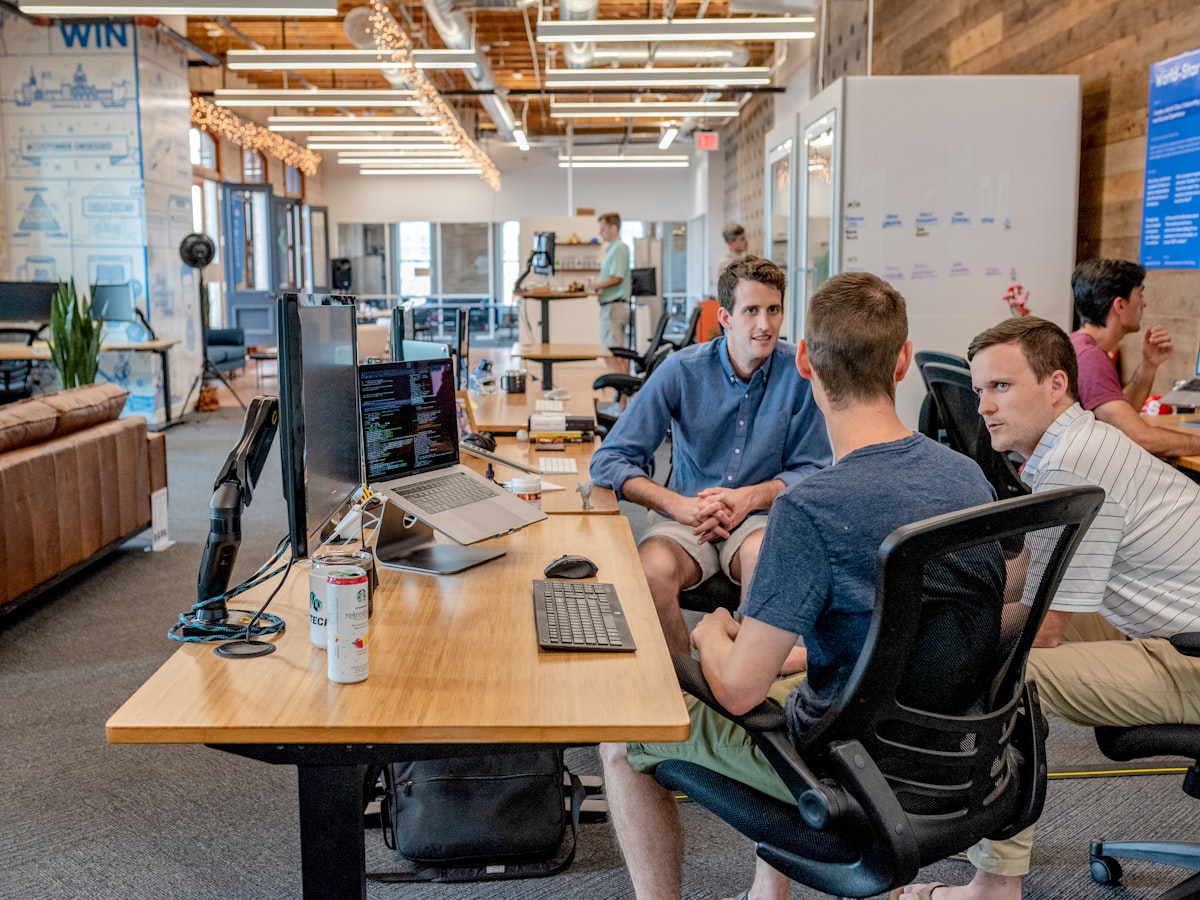What Is Cloud Computing and Why Does It Matter?

Discover how cloud computing works, why it matters in today's digital world, and how it's transforming the way we store data, run applications, and work remotely. A beginner-friendly guide to understanding the cloud.
Ever wondered how you can access your photos from any device, collaborate on documents in real-time with colleagues across the globe, or stream your favorite shows without storing massive files on your phone? Welcome to the world of cloud computing! If that sounds intimidating, don't worry – it's actually much simpler than you might think. In fact, you're probably already using the cloud every day without even realizing it. Let's dive into what cloud computing really means and why it's become such a game-changer in our digital lives.
Understanding the Cloud (Hint: It's Not Actually in the Sky!)
Let's start with the basics. Despite its name, cloud computing has nothing to do with those fluffy white things floating in the sky. The "cloud" is simply a metaphor for the internet and a network of remote servers that store and manage your data and applications.
Think of it this way: instead of keeping all your files, photos, and applications stored locally on your computer or phone, cloud computing lets you store them on powerful computers (called servers) located in data centers around the world. When you need to access your stuff, you simply connect to these servers through the internet. It's like having a super-powered storage unit that you can access from anywhere, anytime, as long as you have an internet connection.
How Cloud Computing Works: The Magic Behind the Scenes
Here's where things get interesting. When you save a photo to Google Photos or edit a document in Microsoft Office 365, you're not actually working with files stored on your device. Instead, your device is communicating with massive data centers filled with servers – essentially very powerful computers that never sleep.

Data centers like this house thousands of servers that power cloud computing services worldwide
These data centers are strategically located around the globe to ensure fast access and reliability. When you upload a file, it might be stored across multiple servers in different locations – this way, if one server goes down, your data is still safe and accessible from another location. It's like having backup copies of everything, everywhere.
The Three Flavors of Cloud Services: IaaS, PaaS, and SaaS
Cloud services come in three main varieties, and understanding them is easier than you think. Let's break them down using everyday examples:
| Service Type | What It Means | Real-World Example | Think of It Like |
|---|---|---|---|
| Infrastructure as a Service (IaaS) | Rent computing power and storage space | Amazon Web Services (AWS), Microsoft Azure | Renting an empty apartment - you get the space and utilities, but you furnish it yourself |
| Platform as a Service (PaaS) | Get tools and environment to build applications | Google App Engine, Heroku | Renting a furnished apartment - the basics are there, you just add your personal touches |
| Software as a Service (SaaS) | Use ready-made applications through your browser | Gmail, Dropbox, Netflix, Slack | Staying at a full-service hotel - everything is ready to use, just check in and enjoy |
The beauty of this system is that you can choose exactly what level of service you need. Starting a simple blog? SaaS solutions like WordPress.com have you covered. Building the next big social media app? You might need the flexibility of IaaS to customize everything to your heart's content.
Meet the Giants: The Big Players in Cloud Computing
When it comes to cloud computing, three names dominate the landscape. Think of them as the digital equivalent of major airlines – each offers similar destinations but with their own unique features and pricing.
| Provider | Market Share | Best Known For | Perfect For |
|---|---|---|---|
| Amazon Web Services (AWS) | ~32% | Being first to market and having the most services | Startups to enterprises, developers who want maximum flexibility |
| Microsoft Azure | ~23% | Integration with Microsoft products and enterprise solutions | Businesses already using Microsoft tools, hybrid cloud setups |
| Google Cloud Platform (GCP) | ~10% | Data analytics, AI/machine learning, and competitive pricing | Data-driven companies, AI projects, cost-conscious businesses |
| Others (IBM, Alibaba, etc.) | ~35% | Specialized services and regional presence | Specific industry needs, local compliance requirements |
Here's the thing – while these companies compete fiercely for business customers, as a regular user, you probably benefit from all of them without even knowing it. That website you're browsing? It might be hosted on AWS. That video you're streaming? Could be powered by Google Cloud. The online game you're playing? Might be running on Azure. They're the invisible backbone of our digital world.
Cloud Computing in Your Daily Life (You're Already Using It!)
Ready for a surprise? You're probably already a cloud computing expert – you just didn't know it! Let's look at how the cloud has quietly become part of your daily routine:
- **Streaming Entertainment**: Netflix, Spotify, YouTube, and Disney+ all use cloud infrastructure to deliver content to millions of users simultaneously. No more waiting for downloads!
- **Photo Storage**: Your iPhone photos automatically sync to iCloud, while Android users rely on Google Photos. Your memories are safe even if you drop your phone in a puddle.
- **Email and Communication**: Gmail, Outlook.com, WhatsApp, and Zoom all live in the cloud. You can access your messages from any device, anywhere.
- **Work and Collaboration**: Google Docs, Microsoft 365, Slack, and Trello let teams work together in real-time, even when they're continents apart.
- **Online Shopping**: Amazon, eBay, and practically every e-commerce site use cloud services to handle traffic spikes during sales and holidays.
- **Banking and Finance**: Your mobile banking app, investment platforms, and even cryptocurrency exchanges rely on cloud infrastructure for security and scalability.
- **Gaming**: From mobile games to Xbox Game Pass, cloud gaming is making high-end gaming accessible without expensive hardware.
- **Social Media**: Facebook, Instagram, TikTok, and Twitter process billions of posts, photos, and videos daily – all thanks to cloud computing.

The cloud enables seamless access to your data and applications across all your devices
Why Everyone's Moving to the Cloud: The Game-Changing Benefits
So why has cloud computing taken over the world? It's not just hype – there are real, tangible benefits that make life easier for everyone from individual users to massive corporations:
- **Cost Efficiency**: No need to buy expensive servers or worry about maintenance. Pay only for what you use, like a utility bill.
- **Accessibility Anywhere**: Work from a beach in Bali or your kitchen table – your files and applications are always accessible with an internet connection.
- **Automatic Updates**: Software updates happen behind the scenes. You always get the latest features without lifting a finger.
- **Scalability**: Need more storage or computing power? Scale up instantly. Don't need as much? Scale down just as easily.
- **Collaboration Made Easy**: Multiple people can work on the same document simultaneously, with changes syncing in real-time.
- **Disaster Recovery**: Your data is automatically backed up across multiple locations. Hardware failures become minor inconveniences, not catastrophes.
- **Environmental Benefits**: Shared resources are more efficient than everyone running their own servers, reducing overall energy consumption.
- **Innovation Speed**: Companies can launch new features and services faster when they don't have to build infrastructure from scratch.
The Flip Side: Challenges and Things to Keep in Mind
Now, let's be honest – cloud computing isn't all sunshine and rainbows. Like any technology, it comes with its own set of challenges and considerations:
Privacy and Security Concerns
When your data lives on someone else's servers, questions naturally arise: Who can access it? How is it protected? What happens if there's a security breach? While major cloud providers invest heavily in security (often more than individual companies could afford), the responsibility is shared between the provider and the user.
Compliance and Legal Considerations
Different countries have different laws about data storage and privacy. European companies need to consider GDPR, while healthcare organizations in the US must comply with HIPAA. The global nature of cloud computing can sometimes create complex legal situations.
Potential for Vendor Lock-in
As you build applications and store data with one cloud provider, switching to another becomes increasingly difficult and expensive. It's like changing banks – possible, but involves considerable effort and planning.
What's Next? The Exciting Future of Cloud Computing
The cloud computing revolution is far from over. In fact, we're just getting started! Here are some trends that are shaping the future of how we interact with technology:
Serverless Computing: Code Without the Hassle
Imagine writing code without worrying about servers at all. Serverless computing (which, confusingly, still uses servers – they're just completely managed for you) lets developers focus purely on writing applications. You upload your code, and the cloud provider handles everything else. It's like having a personal assistant who handles all the boring technical stuff.
AI Integration: Making Everything Smarter
Cloud providers are embedding artificial intelligence and machine learning into their services. Soon, your applications might automatically optimize themselves, detect and fix problems, and even predict what users want before they ask for it. It's like having a crystal ball for your technology needs.
Edge Computing: Bringing the Cloud Closer
While cloud computing centralizes resources in massive data centers, edge computing brings processing power closer to where it's needed. Think of it as having mini data centers scattered around – perfect for applications that need lightning-fast response times, like autonomous vehicles or augmented reality.
Green Cloud: Sustainability Takes Center Stage
Major cloud providers are racing to achieve carbon neutrality and run their data centers on renewable energy. Microsoft aims to be carbon negative by 2030, while Google has been carbon neutral since 2007 and aims to run on 24/7 renewable energy by 2030. The future cloud will be both powerful and environmentally responsible.
Ready to Dive Deeper? Amazing Learning Resources
Feeling inspired to learn more about cloud computing? Whether you're looking to advance your career, start a new one, or just satisfy your curiosity, here are some fantastic resources to get you started:
Free and Affordable Cloud Computing Courses
AWS Cloud Practitioner Essentials
Amazon's official free introduction to cloud computing fundamentals
Google Cloud Digital Leader Training
Google's introduction to cloud technology and digital transformation
Coursera Cloud Computing Specialization
University-level courses covering cloud computing concepts and practice
edX Introduction to Cloud Computing
Multiple free courses from top universities covering cloud fundamentals
Udemy Cloud Computing Courses
Thousands of cloud computing courses, many with lifetime access
Hands-On Practice and Community Resources
Conclusion
As we've seen, cloud computing isn't just a buzzword or a passing trend – it's the foundation of our modern digital world. From the moment you wake up and check your phone to the late-night Netflix binge, you're interacting with cloud services dozens of times a day. Understanding how the cloud works doesn't just make you more tech-savvy; it helps you make better decisions about the tools you use, the services you trust, and the career paths you might pursue. Whether you're a student exploring career options, a professional looking to stay relevant, or simply someone who's curious about the technology that powers our connected world, learning about cloud computing is time well invested. The future is in the cloud, and now you're equipped to be part of that exciting journey. What will you build up there?
Related Posts

Comments
Leave a Comment
No comments yet
Be the first to share your thoughts!



